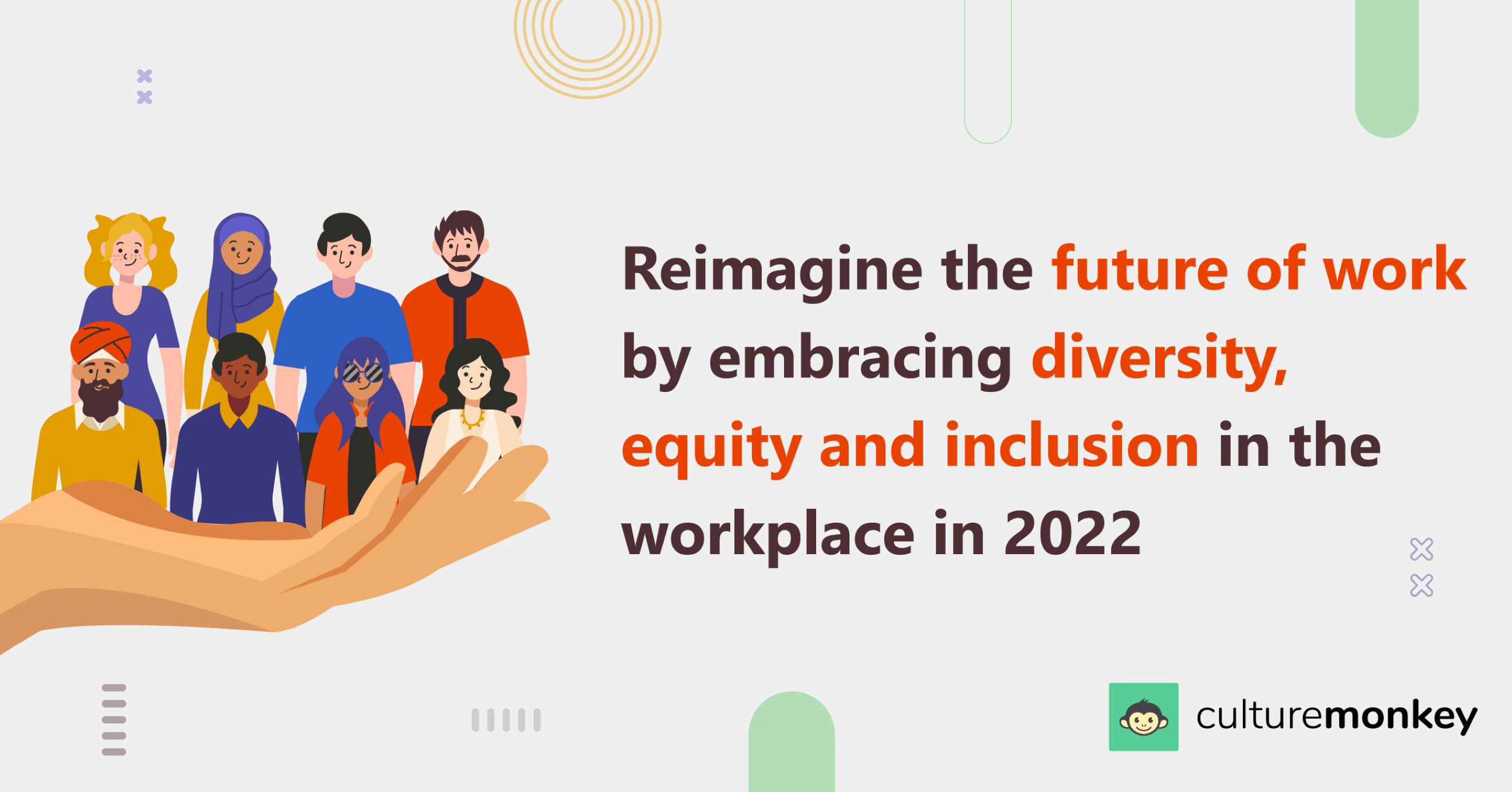How having gender pronouns in the workplace can improve inclusivity: A complete guide

The modern workplace thrives on diversity, both in thought and experience. But creating a truly inclusive environment goes beyond simply bringing people together; it's about ensuring everyone feels welcome, valued, and respected for who they are. One crucial piece of this puzzle? Using the correct gender pronouns.
While it may seem like a small detail, misgendering someone, whether intentional or unintentional, can be hurtful and create feelings of isolation and exclusion.
Conversely, using someone's pronouns to refer to them, the words they choose to represent their gender identity demonstrate respect, affirms their identity, and fosters a sense of belonging. It's time to acquaint ourselves with this aspect of an individual's gender identity to make our workspaces gender inclusive.
What are gender pronouns?

A gender pronoun is a linguistic tool used to refer to individuals in the third person without explicitly using their names. Traditionally, pronouns have been based on binary gender norms, such as 'he' for males and 'she' for females. However, as societal awareness has evolved, so too has the recognition that gender exists on a spectrum.
In essence, the traditional gender binary framework often fails to capture the complexity of individuals' experiences. Recognizing this limitation, society has begun to embrace a more expansive view of gender, acknowledging that it exists on a spectrum.
This shift reflects a collective understanding that gender identity is a deeply personal and multifaceted aspect of an individual person's identity, extending beyond the constraints of a binary framework.
A person's pronouns are important not only because they are used for everyday communication but also because they are used to convey and affirm gender identity.
This is especially true for those whose gender identity does not align with their sex assigned at birth or whose gender identity or expression does not fall within binary constructs of gender.
It's also essential to note that gender pronouns differ from sexual orientation. This term can refer to an individual's romantic or sexual attraction.
While sexual orientation relates to who one is attracted to, gender pronouns pertain to how one wishes you to refer to them in terms of gender identity. Both aspects contribute to the broader landscape of understanding and respecting individual diversity.
Common gender pronouns:
- He/Him/His: Used for individuals who identify as male.
- She/Her/Hers: Used for individuals who identify as female.
- They/Them/Theirs: A gender-neutral pronoun used for individuals who identify outside the binary or when the gender is unknown.
- Ze/Zir/Zirs: Alternative gender-neutral pronouns used by some individuals.
Why gender pronouns are becoming a big deal at work?

You might have heard a lot about gender pronouns at work and people insisting that you refer to them in a certain way. Wondering why these words have become a big deal? Let's break it down.
- Respecting everyone's identity: Using the correct pronoun is about showing respect for everyone's unique identity. Just like we use names, using these are a person's is a way of acknowledging and valuing who people are.
- Moving beyond "he" and "she": Traditionally, we used 'he' for guys and 'she' for gals. But now, we know that gender is diverse. It's not just about being a 'he' or 'she.' Some folks prefer 'they,' and that's totally okay. It's like opening our minds to a bigger picture of how people see themselves.
- Creating a supportive workplace: Making sure we get pronouns right is about creating a supportive workplace. When we use pronouns, it helps everyone feel comfortable and accepted. It's like saying, "Your identity matters, and we respect it."
- Avoiding unintentional mistakes: People are all learning together. Using the preferred pronoun might be new for some, and that's okay. We're all human, and sometimes mistakes happen. But when we learn from them, it shows that we care about creating an inclusive space. Make the effort to refer to people as they wish to be.
- Reflecting changing times: The world is changing, and so is how we talk about gender. Understanding and using the right pronouns at work is a small but powerful way to keep up with these positive changes.
So, why are preferred pronouns a big deal at work? It's about showing respect, embracing diversity, and creating a workplace where everyone feels seen and valued. It's a small shift in everyday language, that makes a big difference.
Benefits of using gender pronouns at work

Using pronouns correctly in the workplace brings about several important benefits, fostering a more inclusive and supportive environment for everyone involved.
- Respect for each individual: Using the correct gender pronouns demonstrates respect for each individual's unique identity. It acknowledges and affirms their self-identified gender, creating a workplace where everyone feels seen and respected.
- Enhanced inclusivity: Correctly using pronouns contributes to a workplace culture that values diversity and inclusion. It sends a message that the organization recognizes and embraces the richness of various identities, creating a more welcoming atmosphere for employees.
- Boosts employee well-being: Feeling acknowledged and respected in the workplace positively impacts employees' mental and emotional well-being. Using the true pronouns helps create a sense of belonging, reducing the likelihood of feelings of exclusion or discomfort.
- Promotes team cohesion: When everyone in the workplace is on the same page regarding pronouns, it promotes team cohesion. This shared understanding contributes to a positive and collaborative work environment, enhancing communication and teamwork.
- Legal and ethical compliance: Acknowledging and respecting employees' identities aligns with legal and ethical considerations. Many jurisdictions recognize the importance of creating an inclusive workplace, and respecting pronouns is a step towards compliance with anti-discrimination and equality laws.
- Improves communication: Using gender neutral pronouns reduces the chances of miscommunication and misunderstandings. Clear and respectful communication is crucial in any workplace, and this simple practice contributes to a more harmonious and effective work environment.
- Demonstrates company values: Correctly using pronouns reflects the values of an organization. It demonstrates a commitment to diversity, equality, and respect for individual differences, which can positively impact the company's reputation and employer brand.
- Employee engagement and productivity: When employees feel valued and respected, they are more likely to be engaged and productive. The use of gender pronouns contributes to a positive workplace culture, fostering an environment where individuals can focus on their work without concerns about identity-related issues.
- Reduces instances of unintentional bias: Creating awareness around pronouns helps reduce unintentional bias and assumptions. It encourages employees to be mindful of their language and interactions, promoting a more inclusive and considerate workplace.
- Adapts to evolving social norms: As societal norms around gender continue to evolve, using correct pronouns demonstrates an organization's adaptability and responsiveness to these changes. It positions the workplace as forward-thinking and aware of the evolving dynamics of gender identity.
How to promote inclusion through correct pronouns?

Promoting inclusion through involves creating a culture of respect, understanding, and acceptance, where each individual's identity is valued and affirmed.
This commitment extends to recognizing and honoring gender non-conforming people and gender-expansive identities, fostering an environment that embraces the diverse experiences and expressions of all employees.
Here are some methods to promote inclusion amongst the gender non-conforming and others.
- Lead by example: Encouraging leaders and team members to use correct gender pronouns demonstrates a commitment to inclusive communication. By embodying this practice, leaders set a positive example, fostering a workplace culture that prioritizes respect and understanding.
- Provide education: Offering workshops on pronouns educates employees about the impact of language on inclusivity. These sessions create awareness and conversation about the significance of using pronouns respectfully, fostering a more informed and considerate workforce.
- Incorporate pronouns in introductions: Normalizing the sharing of pronouns during introductions cultivates openness. This simple yet powerful practice establishes a culture of acceptance, where individuals feel seen and respected from the start.
- Update company policies: Ensuring that company policies explicitly address the respectful use of the right identifier reinforces inclusivity. This alignment in policies communicates a commitment to fostering a workplace that values diversity and respects individual identities.
- Create pronoun-friendly spaces: Introducing features in communication tools for displaying pronouns creates a safe and welcoming environment. This initiative allows employees to express their identities comfortably, promoting a culture of acceptance.
- Provide resources: Sharing resources such as articles and guides on pronouns reinforces education. Accessible materials empower employees to understand the importance of pronouns, facilitating a more informed and workplace.
- Encourage corrections with respect: Fostering an environment where individuals can correct wrong pronoun usage with kindness promotes a learning culture. This approach emphasizes the importance of continual improvement and understanding.
- Celebrate diversity and gender identity: Embracing and celebrating the diversity of gender identities underscores the value each individual brings. Recognition of this diversity creates a workplace that appreciates the richness of varied experiences and perspectives.
- Include pronouns in employee profiles: Encouraging employees to include gender pronouns in professional profiles ensures accurate communication. This practice facilitates respectful interactions across the organization, recognizing and affirming individual identities.
- Address unconscious bias: Raise awareness about unconscious bias related to pronouns and provide tools to mitigate these biases through ongoing training and discussions.
- Support transitioning employees: Offering support and accommodations during gender transitions, including the use of chosen pronouns, demonstrates a commitment to the well-being of all employees. This support for transgender colleagues contributes to a workplace culture that prioritizes understanding and compassion.
- Seek feedback: Regularly soliciting feedback on inclusion efforts related to pronouns ensures continuous improvement. This proactive approach allows organizations to make necessary adjustments based on employee input, reinforcing a commitment to responsiveness.
- Recognize diversity, including gender-neutral pronouns: Acknowledging gender nonbinary, and respecting various gender pronouns, including gender-neutral options, creates an inclusive environment. This recognition ensures that every employee feels valued and respected for their unique identity.
- Incorporate pronouns in HR practices: Including discussions about gender pronouns in HR training emphasizes their importance in creating a supportive workplace. This integration ensures that HR practices align with the organization's commitment to diversity and inclusivity.
- Participate in awareness campaigns: Joining external campaigns and initiatives amplifies the message of using gender pronouns correctly. Active participation in awareness efforts extends the impact beyond the organization, contributing to a broader cultural shift.
Examples of using gender pronouns at work

By incorporating these examples into the workplace, organizations can create a more inclusive environment where individuals feel seen, respected, and valued for their unique identities. Here are examples of using gender pronouns in the workplace in conversation or general situations:
In email signatures:
- Hi [Your Name]
- [Your Position]
- Pronouns: [She/Her]
In introductions:
"Hello, everyone! I'm [Your Name], and I work in the marketing department. My pronouns are [She/Her]."
During team meetings:
"Let's go around and introduce ourselves. I'm [Your Name], and my pronouns are [They/Them/Theirs]." Begin with your own pronouns! Also consider using neutral terms and instead of "Hey guys", consider "Hey team/folks"
In professional profiles:
John Doe
Senior Developer
Pronouns: He/Him
In employee directories:
Include a section for pronouns in the company's internal employee directory.
On name badges:
Add a line for pronouns on employee name badges during conferences or events. This prevents people from addressing them by a wrong name and prevents misgendering.
In virtual meetings:
"Before we begin, let's introduce ourselves with our names and pronouns. I'm [Your Name], and I use [She/Her]."
In training materials:
Include a section on the importance of using true pronouns in diversity and inclusion training materials.
On company website profiles:
Create a section on employee profiles on the company website that includes their name, role, and pronouns.
In company policies:
Ensure that company policies and guidelines emphasize the respectful use of gender pronouns.
In employee onboarding:
Include information about pronoun usage during the onboarding process for new hires.
During team building activities:
"As we engage in team-building activities, let's also be mindful of using the right pronouns to make everyone feel comfortable."
In employee resource groups:
Encourage employees to share their pronouns during meetings of employee resource groups or affinity networks.
On internal communication platforms:
Utilize internal communication platforms for employees to voluntarily share their preferred pronouns.
On collaboration tools:
Incorporate pronouns into professional collaboration tools, making it easy for team members to know and use the correct one.
7 Best practices to enable gender pronouns at work as a leader

Now that the conversation around inclusive workplaces is at an all-time high, you must be wondering what you can do as a leader to improve inclusivity. Here are some ideas.
- Include pronouns in official communication: Incorporate pronouns in official documents, your email signature, and communication platforms. This reinforces the organization's commitment to recognizing diverse identities.
- Provide education: Offer training sessions to educate employees about the significance of gender pronouns. Ensure that the team understands the impact of using correct language on fostering a respectful workplace.
- Create a pronoun-friendly culture: Establish a workplace culture where using gender pronouns is seen as a positive and natural practice. Foster an environment where team members feel comfortable correcting and learning from each other.
- Respect privacy and choice: Respect the privacy and choice of a person regarding the disclosure of their pronouns. Avoid assumptions and create an atmosphere where team members can choose to share their pronouns voluntarily.
- Incorporate pronouns in performance reviews: Include discussions about pronoun usage and inclusivity in performance reviews, emphasizing the importance of these practices in fostering a positive and respectful work environment.
- Provide pronoun resources: Distribute accessible resources and guidelines on gender pronouns, ensuring that employees have access to information that helps them understand and use pronouns correctly.
- Encourage pronoun visibility: Encourage employees to visibly display their pronouns in various workplace settings, such as mail signatures or virtual meeting profiles, promoting a norm of pronoun visibility.
Simple steps go a long way! Remember, while you can’t force your employees to disclose their pronouns, but you can create opportunities for them to share their correct ones.
From hiring paperwork, to employee questionnaires, giving employees an opportunity to check a box for their pronouns helps make a healthy environment—but you must make sure to include an “N/A” or “I would prefer not to state” option.
An employee may not be ready to “come out” and disclose their gender identity to their colleagues, and a mandate would create unnecessary pressure and create unnecessary stress. You may also want to include a space for candidates to share their preferred name if it's different than their legal name.
Leaders embracing these additional practices contribute to a workplace culture where gender pronouns are not just acknowledged but actively integrated into the fabric of daily interactions, fostering an environment of mutual respect and inclusivity.
The importance of creating an inclusive culture to reduce employee turnover

- Enhances employee retention: An inclusive culture fosters a sense of commitment and loyalty among employees. When a person feel connected to their workplace and colleagues, they are more likely to stay with the organization for the long term, reducing turnover rates.
- Mitigates feelings of exclusion: Inclusive cultures actively work to eliminate feelings of exclusion or isolation among employees. By creating an environment where everyone's contributions are valued, organizations mitigate factors that may otherwise prompt individuals to seek employment elsewhere.
- Encourages continuous development: Inclusive cultures invest in the continuous development and growth of all employees. Organizations that prioritize individual development opportunities demonstrate a commitment to their workforce, fostering an environment where employees are motivated to stay and progress in their careers.
- Facilitates effective communication: Inclusivity is closely tied to transparent and effective communication. When employees feel heard and understood, they are more likely to remain engaged with their work and less likely to leave due to communication breakdowns or misunderstandings.
- Promotes flexible work environments: Inclusive cultures recognize and accommodate diverse work styles and needs, including flexibility in work arrangements. Organizations that prioritize flexibility create an environment where employees can achieve a better work-life balance, contributing to lower turnover rates.
- Adapts to changing workforce demographics: Inclusive cultures are better equipped to adapt to changing workforce demographics. As the workforce becomes more diverse, organizations that embrace inclusivity are positioned to attract and retain talent from various backgrounds, reducing turnover associated with demographic shifts.
- Strengthens employee wellness programs: Inclusive cultures often incorporate robust wellness programs that address diverse employee needs. By prioritizing employee well-being, organizations reduce turnover driven by burnout, stress, or dissatisfaction with wellness support.
By prioritizing these aspects of inclusivity, organizations can build a workplace culture that not only reduces employee turnover but also fosters sustained engagement and satisfaction.
Role of DEI surveys in understanding employee inclusivity at your organization

Diversity, Equity, and Inclusion (DEI) surveys play a crucial role in comprehensively understanding employee inclusivity within an organization. Here's how they contribute, utilizing the provided keywords:
Assessing inclusivity levels
DEI surveys provide a structured mechanism to assess the current state of inclusivity within the organization. By including specific questions related to gender pronouns, identities, and personal pronouns, these surveys offer insights into how well employees feel included and respected in the workplace.
Measuring diversity perceptions
These surveys help gauge perceptions of diversity, encompassing identities, orientations, and various aspects of personal and professional backgrounds. Understanding how employees perceive diversity within the organization is essential for creating an inclusive culture.
Identifying usage awareness
DEI surveys can include questions about employees' awareness of and sensitivity to language usage. This helps organizations gauge whether their workforce is informed about the importance of using correct and incorrect pronoun and whether there is a need for additional education or awareness campaigns.
Evaluating inclusion practices
Through DEI surveys, organizations can evaluate the effectiveness of their current inclusion practices. This includes assessing the implementation of policies, awareness campaigns, and any existing support systems for employees related to gender pronouns and inclusivity.
Capturing employee feedback
DEI surveys provide a platform for employees to express their opinions and experiences regarding inclusivity. By incorporating questions related to personal pronouns, identities, and inclusivity efforts, organizations can gather valuable feedback that informs targeted improvements.
Tailoring inclusion initiatives
Insights from DEI surveys allow organizations to tailor their inclusion initiatives based on the specific needs and preferences of their workforce. This customization ensures that initiatives related to gender pronouns align with the diverse experiences and expectations of employees.
Measuring cultural competency
DEI surveys often include questions that assess the cultural competency of the organization. This involves evaluating how well employees understand and respect diverse gender identities and pronouns and providing valuable information for targeted training and education programs.
Monitoring progress over time
Conducting DEI surveys at regular intervals enables organizations to monitor progress in fostering inclusivity. Tracking changes in employees' experiences and perceptions over time helps measure the impact of implemented initiatives and find areas that require ongoing attention.
Informing training programs
Insights from DEI surveys guide the development of training programs focused on gender pronouns and inclusivity. Organizations can find specific areas where employees may benefit from additional education or resources, ensuring that training efforts address genuine needs.
Enhancing organizational reputation
Positive feedback from DEI surveys signals to employees and external stakeholders that the organization is committed to creating an inclusive environment. This, in turn, enhances the organization's reputation as an employer that values diversity, equity, and inclusion.
Conclusion
Title VII of the Civil Rights Act of 1964 is a federal law in the United States. It prohibits employment discrimination on the basis of race, color, religion, sex discrimination, and national origin.
As organizations progress, there's a collective responsibility to evolve workplaces into environments where correct pronouns aren't just a necessity but a celebration of diversity. This commitment safeguards people from the weight of and unlawful harassment, misidentification, fostering an inclusive atmosphere that values and empowers every individual.
To further empower your organization on its journey towards a more inclusive culture, consider leveraging CultureMonkey. Our comprehensive platform is designed to assess, improve, and maintain a workplace culture that prioritizes diversity, equity, and inclusion.
Through insightful surveys and analytics, CultureMonkey empowers you to measure employee sentiment, identify areas for improvement, and foster a workplace environment where everyone thrives.



